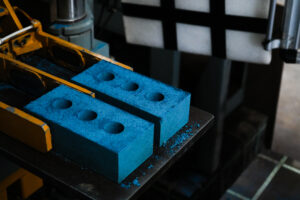Smart micro antenna company, Sofant Technologies, will launch a new evaluation kit at Mobile World Congress in Barcelona this month. The kit will allow mobile, RF component and chipset manufacturers to test Sofant’s sixth generation RF MEMS switch, technology that unlocks the true potential of mobile devices.
A key challenge for manufacturers is that antenna technology has not kept pace with the constantly increasing demands of mobile devices. In a booming global market, mobile and tablet users battle with short battery life and weak connections every day.
Sofant have developed three core technologies to combat this issue. Together they provide a steerable and focussed miniaturised SmartAntenna that dramatically improves wireless connectivity and doubles the battery life of mobile devices.
This means that smartphones will work as they were intended. Performing to the level manufacturers want, SmartAntenna will end a cycle of weak signals, dropped calls and short battery life for the consumer.
It is the first time miniaturised smart antenna technology has been used in mobile devices. Sofant’s ground-breaking technology has been greeted with intense industry interest following their debut at CES in Las Vegas last month.
The unique RF MEMS switch, based on Sofant’s patented SUMTM technology, is an integral part of SmartAntenna and the AvtoRF product range.
Ultra low power, high performance and greater reliability, the RF MEMS switch already outperforms the best MEMS components on the market. It saves battery life and boosts antenna performance by enabling the SmartAntenna solution.
Sofant’s COO, Ahmed El-Rayis, said: “The recent demand for MEMS technology has been driven by smartphones because it increases their functionality. We believe advances in RF MEMS will create the same market effect. Our RF MEMS switch enables a smart antenna that provides superior wireless connectivity and battery life. It will transform user experience.”
The new evaluation kit comprises a board and two integrated Sofant RF MEMS devices which are connected through a USB cable to a PC, controlled through Sofant’s proprietary software. The user connects the board to a Network Analyzer through an SMA connector where it monitors the performance of the RF MEMS devices and the effects of capacitance on the RF signals. The connector can be used with other RF devices to test their performance and tunability with Sofant’s sixth generation RF MEMS.
Ahmed El-Rayis added: “Smartphone providers such as power amplifier and filters manufacturers will benefit from our MEMS technology, enabling tunability for products which will support next generation wireless devices”
Each of Sofant’s technologies can be licensed together or as a single smart micro antenna system. The RF MEMS switch evaluation kit will be available to mobile, RF component and chipset manufacturers.








































